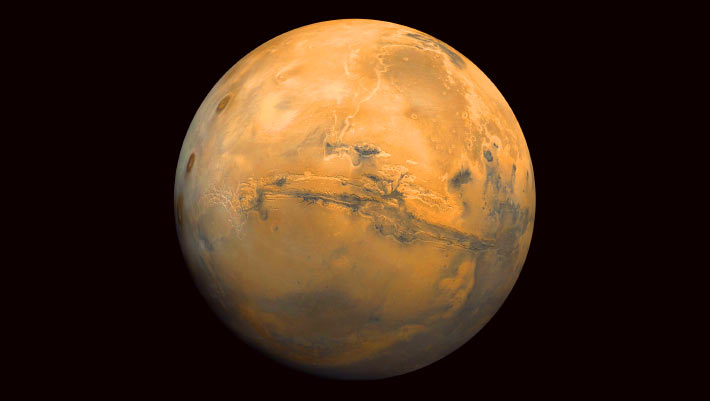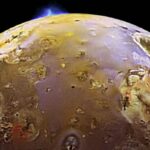Current impact rates at Mars could be 2-10 times higher than previously estimated, depending on the size of the meteoroids, according to new research.
Mars; the center of the scene shows the entire Valles Marineris canyon system. Image credit: NASA Goddard Space Flight Center.
“It’s possible Mars is more geologically active than we thought, which holds implications for the age and evolution of the planet’s surface,” said Brown University’s Dr. Ingrid Daubar.
“Our results are based on a small number of examples available to us, but the estimate of the current impact rate suggests the planet is getting hit much more frequently than we can see using imaging alone.”
Dr. Daubar and colleagues used the highly sensitive seismometer onboard NASA’s InSight lander to identify eight new impact craters from meteoroids not previously seen from orbit.
The frequency of these cosmic collisions challenges existing notions about how often meteoroids hit the surface of Mars and suggests a need to revise current Martian cratering models to incorporate higher impact rates, especially from smaller meteoroids.
The findings could ultimately reshape current understandings of the Martian surface — as batterings from small meteoroids continue to sculpt it — and the impact history of not just Mars, but other planets.
“This is going to require us to rethink some of the models the science community uses to estimate the age of planetary surfaces throughout the entire Solar System,” Dr. Daubar said.
Six of the craters the researchers detected were near the site where the stationary InSight set down.
The two distant impacts they identified from the data were the two biggest impacts ever detected by scientists, even after decades of watching from orbit.
The larger impacts, each leaving a crater roughly the size of a football field, came just 97 days apart, underscoring the higher frequency of these types of geological events.
“This size impact, we would expect to happen maybe once every couple of decades, maybe even once in a lifetime, but here we have two of them that are just over 90 days apart,” Dr. Daubar said.
“It could just be a crazy coincidence, but there’s a really, really small likelihood that it’s just coincidence.”
“What’s more likely is that either the two big impacts are related, or the impact rate is a lot higher for Mars than what we thought it was.”
“Planetary impacts are happening all across the Solar System all the time.”
“We’re interested in studying that on Mars because we can then compare and contrast what’s happening on Mars to what’s happening on the Earth,”
“This is important for understanding our Solar System, what’s in it and what the population of impacting bodies in our Solar System looks like — both as hazards to the Earth and also historically to other planets.”
The study appeared today in the journal Science Advances.
_____
Ingrid J. Daubar et al. 2024. Seismically detected cratering on Mars: Enhanced recent impact flux? Science Advances 10 (26); doi: 10.1126/sciadv.adk7615




